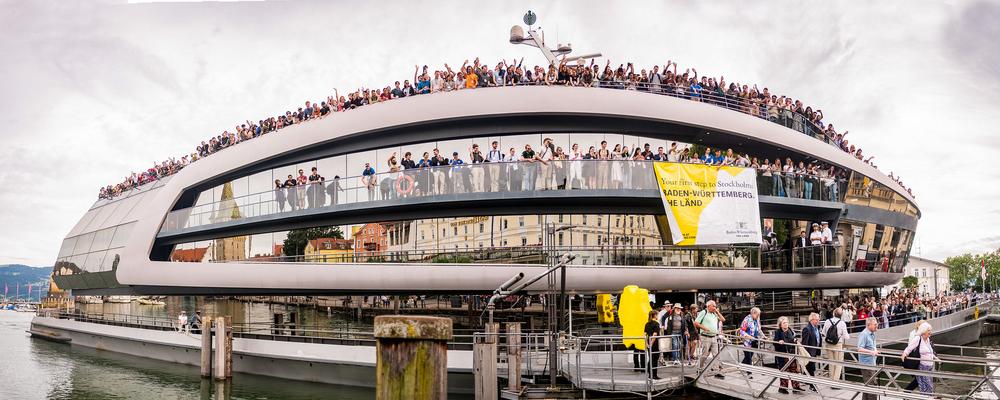Hi Enrique! Tell us a bit about the Nobel meeting – where is it held, what’s the mission?
Enrique Rozas Garcia: The Lindau Nobel Laureate Meetings are held in Lindau, Germany. They started in 1951 to reconnect the international scientific community with Germany post-World War II. This opportunity was mediated by The Lennart-Bernadotte Foundation, with its seat in Mainau island and connections to the Swedish royal family and by way of that, the Nobel committee.
The meetings include talks by Nobel Laureates. The topic alternates yearly between the three Nobel Prize scientific disciplines; Physics, Chemistry and Physiology/Medicine. Every five years an interdisciplinary meeting takes place, and an Economic Sciences meeting is held every three years. This year’s topic was physics, and no less than 37 Laureates attended the meeting.
As for their mission, the slogan of the meeting is “Educate, Inspire, and Connect”. The meeting is open to participants across generations, disciplines, nationalities and cultures. I think scientists from over 100 countries attended this year.
The format of the meetings is fairly free with plenty of space dedicated than Q&A’s. The objectives are very broad and they go beyond discussions of technical matters. For example, the Mainau Declaration of 1955 against the use of nuclear weapons was result of this meeting. Incidentally, the declaration was renewed this year and the attendees of the meeting got together to sign their own appeal.
Tell us about the events you participated in in preparation for the meeting!
Enrique Rozas Garcia: I was very enthusiastic to attend and meet everyone, of course, and a bit nervous. In the months leading up to the meeting, there were some events one could take part in. I joined the Sciation which was a 48-hour competition where we developed a project on the topic "Physics as a Driver of a Sustainable World" with a group of about 10 other people. The group I was in, led by previous alumni Rebecca Meißner, did a project on Open Source Software Efficiency and we were named one of the three winners. As one of the winning groups, we got to discuss how to turn our project into a viable concept with representatives from funding organisations, business experts, early investors and others looking to make a difference through science at the Lindau meeting. There will be more follow-up content related to the Sciathon in the following weeks.
What was it like attending the meeting?
I was hoping to get a couple of anecdotes about meeting noble laureates and some new contacts and this was the case. Since the participant pool is so large - about 600 people - it is easy to meet others working on related areas and be able to discuss your ideas with them.
Another nice thing that I gained is related to outreach presentations. When I visit my home city, I usually take the chance to give presentations to high school kids on modern physics topics in the most accessible manner I can manage. It's a great challenge for me and also very fun! My past presentations have been on the topic of quasi-crystals and I got the chance to meet and even take a picture with Dan Shechtman, who got the 2011 Chemistry Nobel Prize for their discovery. Meeting and discussing with other Laureates also gave me nice ideas for future topics, which is always the hardest part of the presentations.
What is the application process like?
The application is either a global multi-step selection process, or you can apply through a country-specific application. The Swedish delegation for this year was 5 people, selected by The Royal Swedish Academy of Sciences, together with Ragnar Söderberg's foundation. I got in through the global application process. Apparently, more than 20,000 young researchers apply to attend each meeting.
The selection process involves the usual: CV, motivation statement and recommendation letter requirements. After being selected for the meeting there are still some exclusive events, like lunches and walks with the Laureates, that you have to apply for individually.
Any advice for others who hope to join future iterations?
To apply ASAP! You can apply several times but only attend once, unless you win a Nobel Prize or you become part of the staff, and the application is essentially for students under 35. Since the topic changes each year and the selection process is quite long, the most important part is to not miss the application window.
